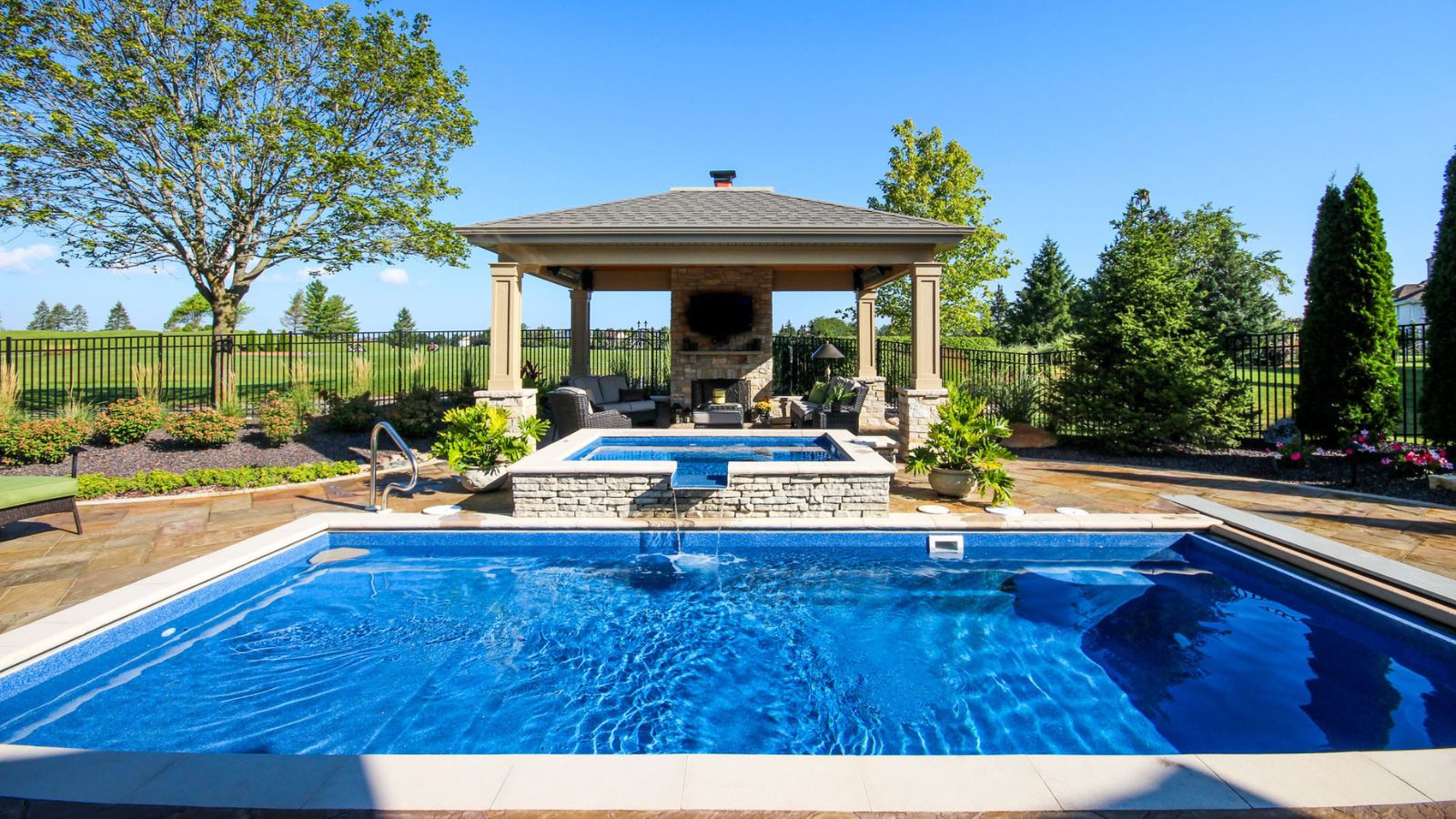
When I worked as a lifeguard, there was one chore that we had to complete without question every day – testing the pool water.
Beyond keeping the pool clean, this simple test also ensured the water was safe and free from excessive chemicals.
It may have been a commercial pool, but this weekly pool maintenance task is just as important at home, pool pros urge. Here’s how to test pool water properly at home, and why it’s so important to keep your family safe.
Why do you need to test pool water
Testing pool water allows you to check the chemical levels, letting you know how often to shock a pool and when the water is unsafe to swim in. This means you should not wait until the pool water has turned cloudy to test – it should be part of your regular weekly maintenance.

Justin Miller, co-founder and CEO of General Galactic Systems Inc., explains, ‘Pool water can harbor dangerous bacteria, viruses, and parasites (like E. coli). It’s important to ensure that you have the proper amount of sanitizer (Chlorine or Bromine) in your water to make sure that these organisms are killed quickly and are not a threat to you.
‘Similarly, your pH level can reduce your sanitizer’s effectiveness if it’s too high, or cause skin and eye irritation if it’s too low. So, keeping both your sanitizer level and your pH level balanced is important for your health. In addition, your pool equipment can be damaged by improperly balanced water, so keeping your water balanced will not only keep you healthy, but it can also keep your pool equipment healthy.
‘And of course, keeping your water chemicals balanced leads to a good-looking pool. Nobody wants a cloudy, green, murky pool. Proper balance, with the right amount of sanitizer, leads to a crystal clear pool.’
Testing is, of course, only part of the maintenance. You also need to understand the difference between pool shock, chlorine, and bleach, so that you can properly balance the levels.
How to test pool water

You have three main options when it comes to testing home pool water, be it in a traditional swimming pool, or before shocking a hot tub: taking water to a pool store, at-home kits, and automatic testers.
Taking water to the store
Mike Dornan, retail general manager at Carlton Pools, says, ‘A customer’s best option for accurate tests and expert recommendations is to bring a sample of the pool water into a store that uses Bioguard Smart labs to fine-tune water chemistry. Some stores will do this for free.’
However, Justin adds, ‘You must take the sample straight there and avoid leaving it in the sun. It is worth mentioning that this can take a lot of time, especially if you have a long drive or have to wait in line when you get there. Because of this, people don’t usually do this more than once a week, which is not really frequent enough to maintain safe water.'
At-home testing
The most common option for testing the pool water at home is to use an at-home test kit. This may not be as reliable as the store’s equipment, but it is easier, quicker, and can ensure that you test the water weekly to help you shock a pool.
You can use either pool testing strips, such as the PoolTime 6-Way Test Strips, from The Home Depot, which are super affordable and quick to use, or a more reliable Digital Water Testing Kit from Amazon, like the ones I used as a professional lifeguard. These are more expensive, but offer more accurate results.
To test pool water in this way, Mike says:
- ‘Get a Pool Test Kit: The kit usually includes strips or drops that react with the chemicals in your pool water.
- Collect a Water Sample: Dip a clean cup or container about elbow-deep into your pool to collect a water sample. Grab the sample from the deep end, away from the return jets.
- Test the Water: Follow the instructions on your test kit.’
From there, you’re checking the levels. Here’s what you need:
- pH Level: Between 7.2 and 7.8
- Chlorine Level: Between 1 and 3 ppm [parts per million]
- Alkalinity: Between 80 and 120 ppm
- Calcium Hardness: Between 200 and 400 ppm
You can also use these test kits to work out how soon after shocking a pool you can swim in it. After shocking, you should wait for the water test to return to the one to three ppm range before taking a dip.
Automatic testing systems
Justin shares, ‘Having a system automatically monitor your water chemistry for you is a relatively new development, but can offer the best accuracy, and the frequency of testing throughout the day, every day, ensures that your pool water is always safe and ready for you.
'Products like the Crystal Water Monitor [available at Amazon for $499] cost more upfront, but then save you time and money in the long run, ensuring your water is always safe and ready for you and your kids.
'The monitor relays data to an app on your phone that sends alerts to let you know when and exactly how much chemicals to add. The Crystal Water Monitor tests your water roughly every 10 minutes, that’s over 1,000 times per week, so as your water chemistry changes throughout the day, it ensures that you’re never in danger.’
What to shop

These strips test your water's hardness, chlorine, pH, alkalinity, and stabilizer levels.

With a six foot pole, scrubbing brush, and durable nylon net, this essential pool kit is perfect for weekly cleaning, helping to prevent algae, moss, and leaves damaging your outdoor pool and affecting the chemical levels.

This rechargeable pool vacuum is ideal for everyday maintenance, removing debris from both above and in-ground pool floors with ease. The wide suction port captures leaves, twigs, and other big debris without clogging.
FAQs
What is the cheapest way to test pool water?
The most affordable way to test pool water is with at-home test strips. They work quickly, are easy to use, and offer fairly reliable results for general weekly pool maintenance. That being said, there are more reliable options, such as digital test kits, however they can prove more expensive.
What is the best way to test a salt water pool?
Salt water pools require different testing methods to chlorine pools. To test a salt water pool, use a digital salinity tester, sodium chloride test strips, or take a sample into a local pool store for testing.
Meet the experts
Although you should test your pool once a week (preferably on the same day of the week, around the same time) it is also helpful to test your water after a heavy rainstorm to work out if you need to shock a pool after it rains, or if it has been heavily used, Mike adds. Furthermore, it is important to follow other safety steps to maintain your swim spot, including cleaning pool filters and winterizing a pool when the time comes, to keep your water safe.







